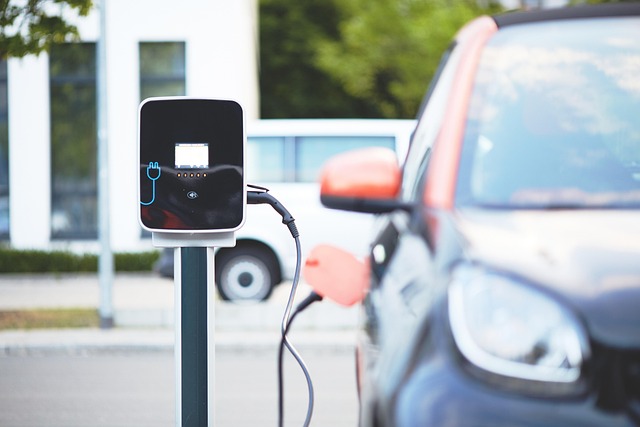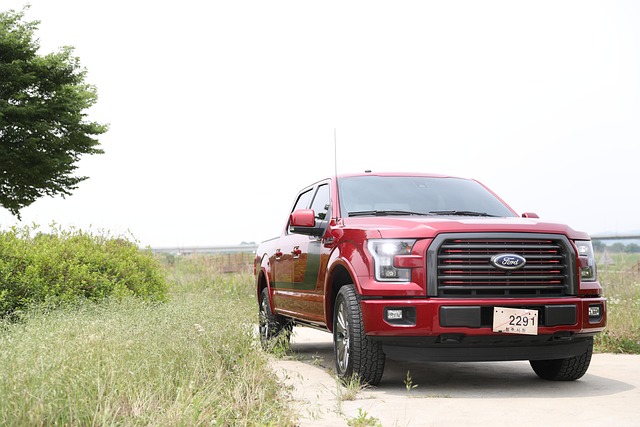Looking to register your car in California? This comprehensive guide walks you through the entire process, from understanding key requirements for car registration in the Golden State to completing the application online or in-person. We cover essential steps like gathering documents for VIN verification and conducting a vehicle inspection. Learn how to obtain a title, pay fees, and receive your official registration documents.
- Understand the Requirements for Car Registration in California
- Gather Necessary Documents for VIN Verification
- Conduct a Vehicle Inspection and Obtain a Title
- Complete the Registration Application Process Online or In-Person
- Pay the Required Fees and Receive Your Registration Documents
Understand the Requirements for Car Registration in California

Before registering your car in California, it’s crucial to understand the requirements. In addition to providing valid documentation like proof of insurance and ownership, the state mandates a thorough vehicle inspection that includes VIN verification. This process ensures that your car meets safety and emissions standards set by the California Department of Motor Vehicles (DMV).
One effective way to streamline this process is through a mobile VIN verifier or mobile VIN inspection service. These services offer convenient, on-site assessments, allowing you to have your vehicle’s VIN verified without the hassle of visiting a DMV branch. This can save time and often includes comprehensive reports on your car’s history and condition, further simplifying the registration procedure.
Gather Necessary Documents for VIN Verification

To initiate the car registration process in California, you’ll need to gather several key documents for VIN (Vehicle Identification Number) verification. This step is crucial as it ensures the vehicle’s authenticity and history. The first step is to obtain your vehicle’s VIN from either the dashboard or the driver-side door post. Then, collect essential paperwork such as the title, registration certificates, proof of insurance, and a valid driver’s license.
Additionally, consider having a mobile vin inspection or using a mobile vin verifier to streamline this process. These services can provide immediate digital verification, making it easier for you to navigate California’s registration requirements. Ensure that all documents are up-to-date and accurate to avoid delays during the registration.
Conduct a Vehicle Inspection and Obtain a Title

Before registering your car in California, it’s crucial to conduct a thorough vehicle inspection to ensure everything is in working order and meets state standards. This process involves verifying critical components such as lights, brakes, tires, and emissions systems. One efficient way to accomplish this is by utilizing a mobile VIN inspection service, which brings the inspection directly to your location for convenience.
After passing the inspection, you’ll need to obtain a title, typically from the previous owner if it’s a used car. The vehicle identification number (VIN) plays a pivotal role in this step, as it allows for accurate record-keeping and verification. A mobile VIN verifier can help ensure that the title is legitimate and matches the specific vehicle, enhancing the security of the registration process in California.
Complete the Registration Application Process Online or In-Person

You have the option to complete the registration application for your vehicle either online or in-person at a California Department of Motor Vehicles (DMV) office. Both methods involve gathering essential documents and providing accurate information, but going digital can save time and sometimes eliminate the need for an in-office visit.
If choosing the online route, you’ll first need to conduct a Vehicle Identification Number (VIN) verification, which is crucial for ensuring the vehicle’s history and identifying potential issues. You can perform this vin inspection or mobile vin verification on your own or through a designated service. Once verified, submit your application along with required documents like proof of insurance, ownership transfer, and payment for registration fees. Alternatively, visiting a DMV office allows for immediate assistance from staff who can guide you during the process, ensuring all necessary steps are taken accurately.
Pay the Required Fees and Receive Your Registration Documents

After submitting your application and documents, the next step in registering your car in California involves paying the necessary fees. These charges include the registration fee, a vehicle identification number (VIN) verification fee, and any additional costs for specialized inspections or emissions tests, depending on your vehicle’s type and age. You can typically pay these fees online through the DMV website or at a local field office.
Upon processing your payment, you will receive your registration documents, including a registration certificate and license plates. In some cases, you may also be eligible for a mobile VIN verification or inspection service, which allows for added convenience when preparing your vehicle for registration. These services utilize a mobile vin verifier to ensure your vehicle’s information matches the data on file, streamlining the registration process even further.
Registering your car in California is a straightforward process that requires understanding specific rules, gathering essential documents, and completing a few crucial steps. By following these guidelines, including VIN verification and providing valid identification, you can ensure a smooth registration experience. Remember to keep your registration documents up-to-date for legal compliance and hassle-free driving in the Golden State.



